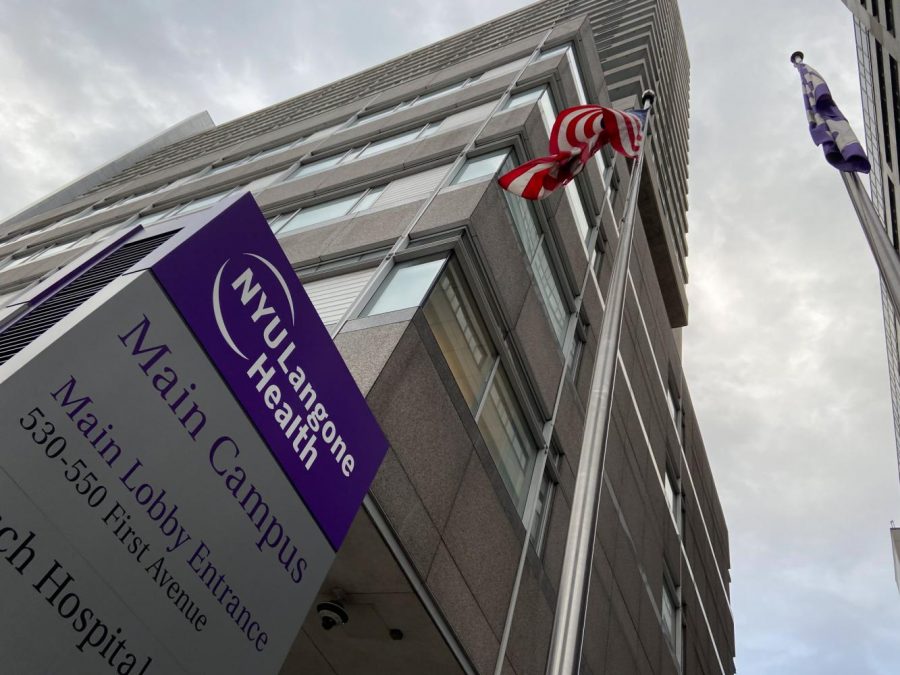A group of NYU Langone Health doctors and researchers published a telemedicine “blueprint” in Medicina — an open-access, peer-reviewed medical journal — on Sept. 9. The paper serves as a template for how to best utilize telemedicine and deliver remote healthcare, helping doctors and patients better adjust to telemedicine and deliver or receive remote healthcare.
Most current literature about telemedicine is geared toward business, economics and statistical evaluations, said Dr. Allison Reiss, an Associate Professor in the Department of Medicine at NYU Long Island School of Medicine. But this paper, which Reiss co-wrote and published with her team, is for doctors and patients.
“We wrote it deliberately in an accessible way because I think that not just the doctors but also the patients are really trying to adjust to telemedicine and might have anticipation or anxiety about what to expect with the telemedicine visits,” Reiss said. “There was nothing [in the literature] that said what actually happens, how does the call go, how do you consumpt it [sic], [and] what information can you glean from it. We set out to write a guide. We were fulfilling a gap and a need.”
Telemedicine is the virtual delivery of medical care via video or audio platforms. The technology was developed in the late 1960s, but has gained traction during the COVID-19 pandemic due to quarantine and isolation. Due to telemedicine’s increased accessibility, analysts expect routine healthcare visits for 2020 to top 200 million — a sharp contrast to an expected 36 million prior to the pandemic.
The new report presents a decision-tree diagram — as well as background risk factors — for assessing suspected COVID-19 infections and details all aspects of a telemedicine visit for potential COVID-19 patients. Reiss said doctors are well-equipped to identify telltale signs of COVID-19 during telemedicine appointments.
“You can hear when someone is really in distress, and you can see it as well, because when you work very hard to breathe, you use every muscle at your disposal to try to suck in air,” Reiss said. “I’m not saying anything can replace the in-person visit and the uniqueness of that, but now we can’t risk it a lot of times. We don’t want patients to come into an office and get COVID or give COVID.”
Dr. Eric R. Goldberg, Senior Medical Director and Clinical Associate Professor in the Department of Medicine at NYU Langone Health, said that telemedicine visits are as expensive as, or cheaper than, in-person visits, since patients save money on transportation, parking, and time.
“Even though it’s still online, you’re still getting an evaluation by a physician,” Goldberg said. “Your appointment isn’t necessarily a shorter appointment because it’s online. I still may be ordering blood tests, x-rays and all the work that goes into a visit other than seeing you face to face … If [college students] have 30 minutes before classes, you could schedule a telemedicine visit in a way that you could not with an in-person visit. Their time is saved.”
Darshana Rawal, a second-year at the College of Global Public Health, thinks telemedicine could potentially greatly shape future public health. She has personal experience with telemedicine, having sat in with her aunt for visits over FaceTime.
“It does save you from making that trip to the hospital or the clinic,” Rawal said. “It reduces waiting times … Before, I used to accompany my aunt to an appointment and we’d be at the waiting room for 30 minutes or so or maybe longer.”
While Reiss believes nothing can replace the uniqueness of an in-person visit, where doctors can touch and listen with stethoscopes, she thinks telemedicine can provide assessment and triage.
“Is that person okay to be at home and not have to be hospitalized or does that person need to go to the hospital?” Reiss said, explicating the principal benefit of telemedicine. “If we can bypass that in-person office visit, we save that person a trip, we save everybody from exposures and maybe we avoid hospitalizations from people catching this disease.”
Goldberg said NYU Langone uses a platform integrated into their electronic medical records to maintain patient confidentiality, as per the Health Insurance Portability and Accountability Act. Currently, however, any platform could be used: under emergency executive orders, the U.S. Department of Health and Human Services has relaxed certain HIPAA rules and privacy responsibilities to better connect patients with healthcare during the pandemic. Nowadays, according to Goldberg, one can use Facetime.
Those without an internet connection are constrained, Reiss admitted, as are those unfamiliar with technology. “But so many older people are really good with those things, they’re seeing their grandchildren that way, they’re doing virtual visits,” she said. “They might have neighbors that can help them out.”
Goldberg stated telemedicine is already changing the course of how future doctors are training, to keep up with new technologies.
“We’ve already started to build curriculum into our medical schools to teach simulated telemedicine visits,” Goldberg said. “We also have the ability to have medical students shadow through the technology, almost like a 3-way call with the patient’s consent and full transparency.”
Although Reiss thinks telemedicine will never replace in-person visits, she believes it will expand and supplement healthcare visits for years to come in the future. She also believes telemedicine to be the answer to areas where people can’t get to clinics or where healthcare workers can’t get to patients.
“We’re going to use it in areas that are just deserts of medical care,” Reiss said. “If you have an expert somewhere and you have a patient somewhere on the other side of the planet, that won’t be a barrier to getting that expert opinion based on real-time information.”
A version of this article appeared in the Monday, Sept. 21, e-print edition. Email Roshni Raj at [email protected].
























































































































































